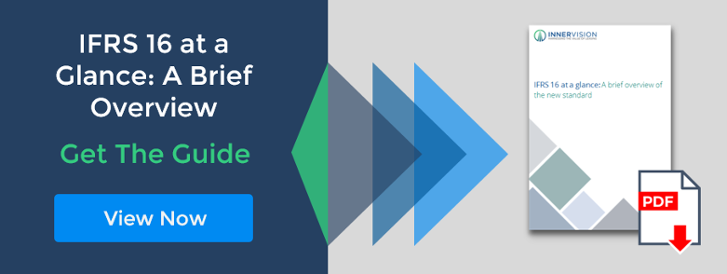How To Assess If Your Lease Portfolio Is Ready For IFRS 16
Updated 18th May 2021 | 5 min read Published 19th October 2017

Being a decade in the making and with a three-year compliance period for companies to understand how IFRS 16 will impact a lease portfolio, as well as the small matter of achieving compliance, the new lease accounting standards will have a huge impact.
It’s understandable that fleet and finance directors, all over, are feeling a little perturbed as the transition deadline looms ever closer. What was once something too distant to be of concern is, it seems quite suddenly, now of serious urgency.
Even if your compliance project is well underway, you might have some nagging doubts as to how ready you are. Here are some warning signs that things might not be going as smoothly as you would hope and some common measures for you to compare your compliance progress against.
Potential Red Flags About The New Accounting Standard
A glaring red flag is that it’s now getting into late 2017 and you are still not certain how ready you are for IFRS 16. The amount of work needed to get ready for compliance cannot be underestimated, yet many businesses are still trying to delay the inevitable.
The new accounting standards take effect as of January 2019 and this is not going to change – that date gets closer every passing day.
It means that the requirement to gather all your lease portfolio data, assess it against the new standards, ensure agreements are financially optimised, decide on which exemptions to enact and determine whether to undergo transitional reporting, has to be defined and completed in a matter of months.
If you have not already got a dedicated team - third party or internal - working hard at achieving all of the above to ensure compliance can be achieved, then again that means the red flags are waving.
Signs That Your Lease Accounting Is Ready For IFRS 16
Well, the opposite of the above, really. If you have all of the items under the responsibility of a dedicated team, you can rest assured that you are well on the way to being ready for the lease accounting changes.
It will be worth getting from the team periodic updates on progress against set milestones towards compliance, which become more frequent nearer the deadline, and you can start to measure readiness against some common KPIs of how well prepared your company is.
Common KPIs To Measure In Light Of IFRS 16's Changes
Not only is the definition of what constitutes a lease changing under IFRS 16, there are also a number of secondary implications. The questions that businesses need to ask themselves in order to determine some measurable KPIs are as follows:
- When will ALL lease agreement information be collated and by whom?
- Which assets will be exempt?
- What is the value of the portfolio going on balance sheet?
- What will the impact be on financial statements?
- Has the ongoing optimising of the lease portfolio into the future been considered?
- When will the stakeholders and board members be advised of the financial impact?
- Who will conduct retrospective accounting through 2018, producing the aforementioned comparative balance sheet and P&L reports for the preceding fiscal years?
Beyond these measurable KPIs, it’s important to know that a range of key financial metrics will be impacted by IFRS 16. Gearing and current ratio financial assessments will be impacted, along with interest cover and operating profit. Loan covenants and credit rating may be affected.
Net income and operating cash flows will also be altered once IFRS 16 accounting changes come into force. Primarily because operating leases will essentially cease to exist and all types of leases will now have to represented on balance sheet.
For those with investors, the company’s books will be affected via a range of measures. Retailers will be pleased to know that EBITDA is expected to rise by more than 40% for their sector, thanks to the reclassification of operating leases. So, updating the board will be paramount to ensure you’re doing everything to be ready for the upcoming changes.
How To Stay In Control Of The Mountain Of Data Required For IFRS 16 Compliance
A lot of data needs to be gathered and analysed to get ready for IFRS 16 and to comply with it going forward. This data acquisition is something which the board has struggled to communicate to businesses all over the world. But, due to the length of time it took to finalise the changes to standards which form IFRS 16, it should be no surprise that there is a weighty tome of data to be gathered.
All information needs to become centralised and easily sourced when needed. The portfolio of agreements will need to be constantly up to date and relevant and all information therein should be clear and easy to obtain.
The best way of achieving this centralised data point is to purchase a cloud-based, online storage point. Ideally, you need an intelligent software solution which can help you to achieve IFRS 16 compliance, as well as being able to help achieve maximum financial performance of your portfolio. Software like LOIS is perfect for this.
Get Up To Speed In Just Two Minutes
Whether you need a recap of the headlines, want to use a handy document for briefing colleagues in a meeting or just need a simple introduction to what’s a complex topic, download a copy of our free IFRS 16 At A Glance.
This pint-sized download will show you all the basics that you need to start getting fully up to speed. If you need something a little more advanced, head to our resource page and browse our range of eBooks.







